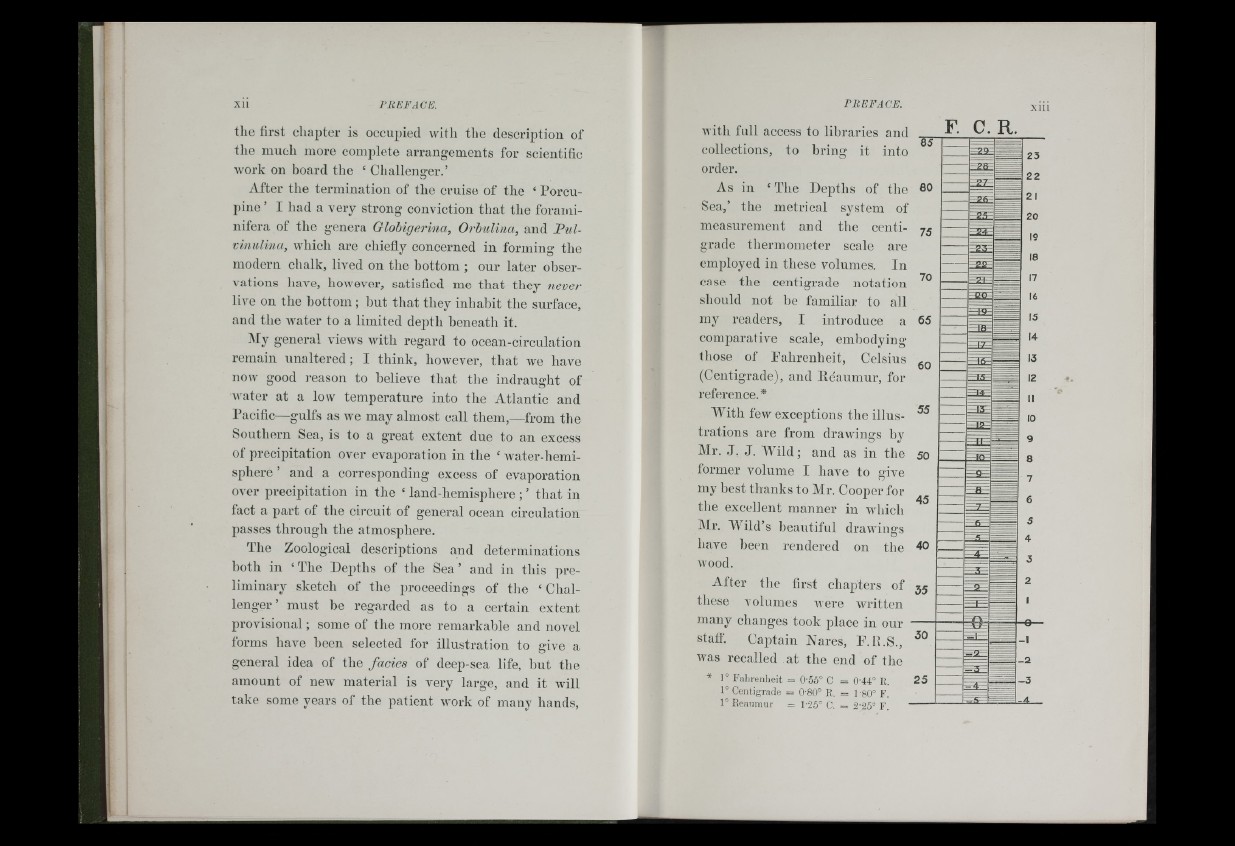
the first chapter is occupied with the description of
the much more complete arrangements for scientific
work on board the ‘ Challenger.’
After the termination of the cruise of the ‘ Porcupine’
I had a very strong conviction that the forami-
nifera of the genera Glohigerina, Orhulina, and JPtil-
vimdina, which are chiefly concerned in forming the
modern chalk, lived on the bottom ; our later observations
have, however, satisfied me that they never
live on the bottom ; but that they inhabit the surface,
and the water to a limited depth beneath it.
i\Iy general views with regard to ocean-circulation
remain unaltered; I think, however, that we have
now good reason to believe that the indrauHit of O
Avater at a low temperature into the Atlantic and
Pacific—gulfs as we may almost call them,—from tbe
Southern Sea, is to a great extent due to an excess
of precipitation over evaporation in the ‘ Avater-hemi-
sphere ’ and a corresponding excess of evaporation
over precipitation in the ‘ land-hemisphere ; ’ that in
fact a part of the circuit of general ocean circulation
passes through the atmosphere.
The Zoological descriptions and determinations
both in ‘ The Depths of the Sea ’ and in this preliminary
sketch of the proceedings of the ‘ Challenger
’ must be regarded as to a certain extent
provisional ; some of the more remarkable and novel
forms have been selected for illustration to give a
general idea of the facies of deep-sea life, but the
amount of new material is very large, and it wdll
take some years of the patient Avork of many hands.
Avith full access to libraries and
collections, to bring it into
order.
As in ‘ The Depths of the
Sea,’ the metrical system of
measurement and the centigrade
thermometer scale are
employed in these volumes. In
case the centigrade notation
should not be familiar to all
my readers, I introduce a
comparative scale, embodying
those of Fahrenheit, Celsius
(Centigrade), and Keaumur, for
reference.*
With few exceptions the illustrations
are from drawings by
Mr. J. J. W ild ; and as in the
former volume I have to give
my best thanks to Mr. Cooper for
the excellent manner in which
Mr. AVild’s beautiful drawings
have been rendered on
Avood.
After the first chapters of
these volumes A\nre Avritten
many changes took place in our
staff. Captain Nares, F.H.S.,
Avas recalled at the end of the
* 1° Fahrenheit = 0-55'-’ C = 0'44° It.
1° Centigrade = 0'80° R. = 180° F.
2-25° F.
40
C. R.
80
75
7 0
A22E;
30
25
-=r-7=
“32E
1° Reaumur = l-25° C.